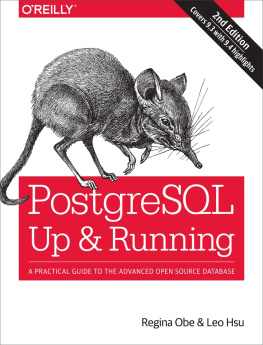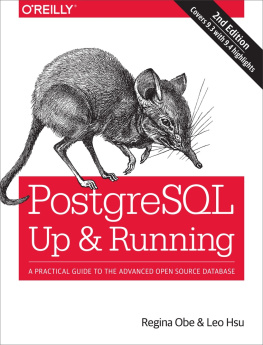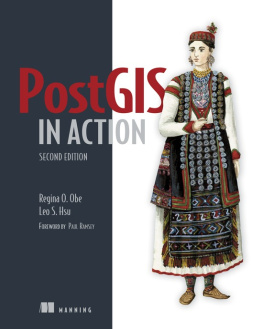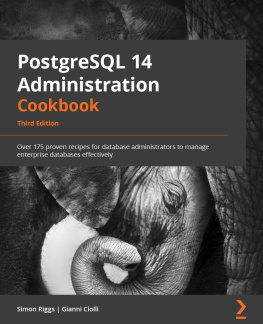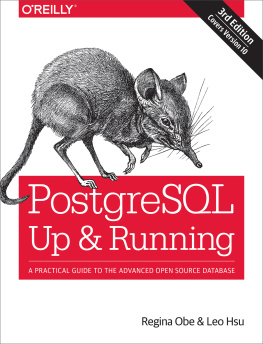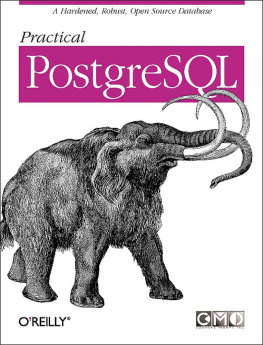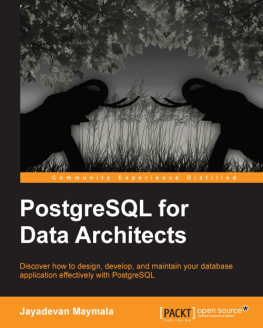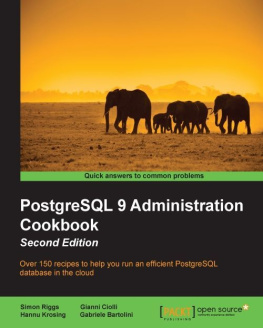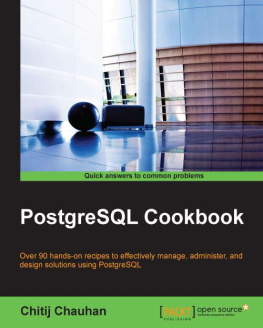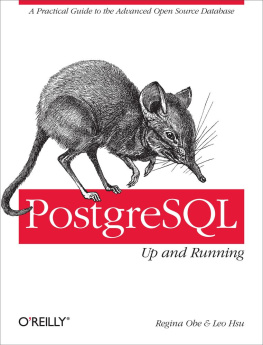Regina O. Obe - PostgreSQL: Up and Running: A Practical Introduction to the Advanced Open Source Database
Here you can read online Regina O. Obe - PostgreSQL: Up and Running: A Practical Introduction to the Advanced Open Source Database full text of the book (entire story) in english for free. Download pdf and epub, get meaning, cover and reviews about this ebook. year: 2014, publisher: OReilly Media, genre: Computer. Description of the work, (preface) as well as reviews are available. Best literature library LitArk.com created for fans of good reading and offers a wide selection of genres:
Romance novel
Science fiction
Adventure
Detective
Science
History
Home and family
Prose
Art
Politics
Computer
Non-fiction
Religion
Business
Children
Humor
Choose a favorite category and find really read worthwhile books. Enjoy immersion in the world of imagination, feel the emotions of the characters or learn something new for yourself, make an fascinating discovery.
- Book:PostgreSQL: Up and Running: A Practical Introduction to the Advanced Open Source Database
- Author:
- Publisher:OReilly Media
- Genre:
- Year:2014
- Rating:3 / 5
- Favourites:Add to favourites
- Your mark:
PostgreSQL: Up and Running: A Practical Introduction to the Advanced Open Source Database: summary, description and annotation
We offer to read an annotation, description, summary or preface (depends on what the author of the book "PostgreSQL: Up and Running: A Practical Introduction to the Advanced Open Source Database" wrote himself). If you haven't found the necessary information about the book — write in the comments, we will try to find it.
With examples throughout, this book shows you how to achieve tasks that are difficult or impossible in other databases. This second edition covers LATERAL queries, augmented JSON support, materialized views, and other key topics. If youre a current PostgreSQL user, youll pick up gems you may have missed before.
- Learn basic administration tasks such as role management, database creation, backup, and restore
- Apply the psql command-line utility and the pgAdmin graphical administration tool
- Explore PostgreSQL tables, constraints, and indexes
- Learn powerful SQL constructs not generally found in other databases
- Use several different languages to write database functions
- Tune your queries to run as fast as your hardware will allow
- Query external and variegated data sources with foreign data wrappers
- Learn how to use built-in replication features to replicate data
Regina O. Obe: author's other books
Who wrote PostgreSQL: Up and Running: A Practical Introduction to the Advanced Open Source Database? Find out the surname, the name of the author of the book and a list of all author's works by series.

